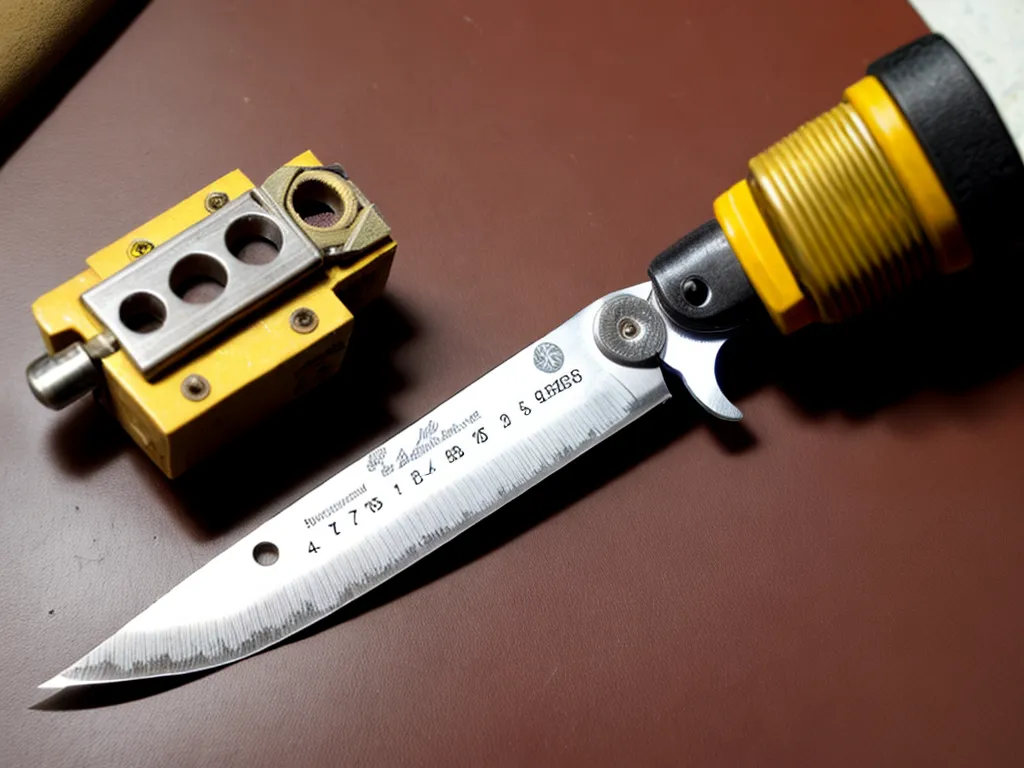
Knife switches were commonly used to control and isolate electrical circuits in the early 20th century before safer enclosed switches became standard. While antiquated, knife switches can still be found in older buildings and industrial settings. Troubleshooting these outdated switches requires care and a basic understanding of their simple yet sometimes dangerous mechanisms.
Assess the Overall Condition
Before attempting to diagnose specific issues, take time to thoroughly examine the overall switch. Check for signs of:
-
Excessive corrosion - Look for green copper oxide deposits and significant rust on the metal components. This can lead to poor connections.
-
Carbon tracking - Inspect for black carbon deposits along the insulators and switch body. Carbon tracking indicates arcing which progressively damages the insulation.
-
Cracked or broken insulators - The ceramic insulators are fragile. Hairline cracks and complete breaks can allow arcing.
-
Loose connections - Wiggle the switchblade and terminals. Any noticeable movement points to loose connections which increase resistance.
-
Damaged contacts - The sliding contacts between the switchblade and jaws should be smooth and clean. Pitting or gaps will cause arcing.
Carefully inspecting the overall condition gives you an idea of the extent of any repairs needed before attempting to restore operation.
Check for Proper Switch Action
The actual switching operation of a knife switch is very simple - the blade separates from or engages with the jaws to open or close the circuit.
With the switch presumably off, manually move the switchblade back and forth between the open and closed positions. Note any problems like:
-
Sticking or jamming - The motion should be smooth and easy. Look for obstructions like deformed metal or accumulated dirt.
-
Failure to align - The blade should neatly engage the jaws when closed. If it stands off or only partially makes contact, alignment may need adjustment.
-
Looseness - There should be little to no side-to-side wobble of the blade or jaws.
-
No snap action - A properly adjusted knife switch will exhibit a distinct snap feel as the springloaded blade engages.
Testing the mechanical operation gives clues about what maintenance or repair tasks are required.
Check Circuit Continuity
Use a multimeter to methodically check circuit continuity through the switch contacts.
First, verify continuity from one fixed jaw to the other with the switchblade removed. This checks the jaw contacts independent of the moving blade.
Next, reinstall the blade and check continuity in both the open and closed positions. The closed position should show continuity while the open position breaks continuity.
Any deviation points to contamination or a weak connection at a specific spot in the current path. Target cleaning and mechanical adjustment at those spots.
Checking continuity pinpoints where an electrical problem may exist. Correlate discontinuities with any mechanical issues noticed during motion tests.
Thorough Cleaning
A thorough cleaning is the first step in revitalizing an antiquated knife switch.
-
Remove all dust and grime from the insulators, body, and hardware using lint-free cloths and isopropyl alcohol.
-
Carefully scrape corrosion and oxides from conductors using a knife or wire brush. Avoid damaging the base metal.
-
Clean all contacts and joints with fine sandpaper or emery cloth. The blade, jaws, pins, and terminals must be shiny clean metal for best conductivity.
-
Compressed air can help dislodge particulates and dry out components after cleaning.
Proper cleaning is essential for both electrical conductivity and smooth mechanical operation. Always de-energize and disconnect the wires before cleaning.
Adjusting and Lubricating
Proper mechanical adjustment and lubrication helps ensure smooth snap-action performance.
-
Adjust the alignment so the blade fully engages the jaws when closed. A slight wiping action improves contact.
-
Tighten any loose hardware and connectors, but avoid excessive tightening or distortion.
-
Lightly lubricate joints and pins with penetrating oil. Too much oil attracts contaminants.
-
Lubricate the blade-to-jaw sliding contacts very lightly with oxidation inhibitor grease to prevent recurrence of corrosion.
-
Check spring tension on the blade. Increase tension slightly if the snap action feels weak or sluggish after servicing.
Getting the right mechanical adjustments is key to achieving good performance and minimal arcing.
Replace Damaged Components
For badly damaged switches, replacement of irreparable components may be necessary:
-
Jaws - If the jaw contacts are badly pitted, gouged, or misaligned, replacement may be needed. Jaws are removable on larger switches.
-
Insulators - Small hairline cracks in the ceramic insulators can be impregnated with epoxy for reinforcement. Severely cracked or carbon tracked insulators should be replaced.
-
Blades - Excessively corroded or worn switchblade assemblies may need replacement. Upgrade to a newer enclosed switch is recommended for very deteriorated blades.
-
Hardware - Replace any hardware such as bolts, nuts, pins, and washers that are damaged or excessively corroded. Use the correct size and type.
Component replacement restores performance and safety. Consider a professional electrician for major repairs.
Summary
While antiquated, knife switches are repairable and serviceable with careful attention. Thorough inspection, cleaning, adjustment, lubrication, and replacement of damaged parts can often restore proper and safe operation. However, upgrades to modern enclosed safety switches are recommended where feasible.